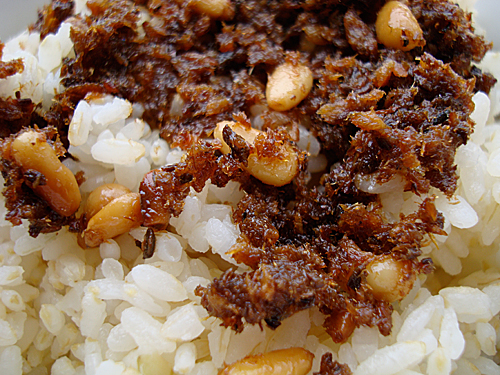
I haven't added a new furikake recipe in a long time. So, it's about time I did. As I wrote in the first homemade furikake recipe article, the homemade kind has a lot of advantages over the storebought kind.
One of the advantages is cost, and this furikake uses a cheap yet healthy ingredient that's available to most people, wherever they may live: Canned sardines! A can of about 4 ounces of sardines (120g) or so costs a couple of dollars or euros or whatever at most. And sardines are packed with good nutrients: Omega-3s, protein, calcium, etc.
I've attempted to stay away from Japanese ingredients with this one, since I occasonally get complaints from readers that they can't get a hold of those ingredients. If you can't get Worcestershire sauce for some reason, use steak sauce or a similar rich, brown sauce. If pine nuts (though this only uses 2 tablespoons) are beyond your means, use sesame seeds or chopped nuts of another kind.
This furikake is good on pasta as well as rice.